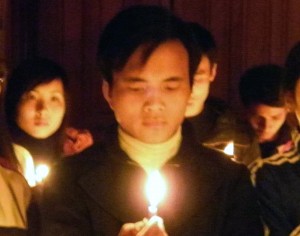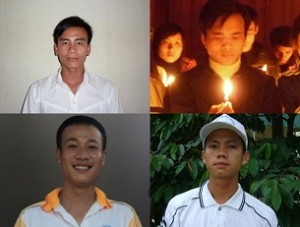www.dailymail.co.uk
HONG KONG/TAIPEI, Nov 14 (Reuters) – More than 50 violations at a steel mill run by Taiwan’s Formosa Plastics Group, including the unauthorised use of a dirtier production process, led to Vietnam’s worst environmental disaster, according to an internal government report.
The July report, reviewed by Reuters, is the first official document to emerge publicly since the April accident, when a toxic leak sullied over 200 km (125 miles) of coastline, killed more than 100 tonnes of fish and left thousands jobless.
After months of popular outrage against both the Hanoi government and one of the communist state’s largest investors, Formosa agreed in June to pay $500 million in compensation.
The report, signed by Vietnam’s environment minister and written after consultation with an unidentified panel of international experts, said Formosa did not keep to production plans agreed in original environmental assessments made for the $10.6 billion project.
Begun in 2008, the plant was still ramping up at the time of the spill and working at less than 25 percent of total capacity, according to a Formosa Ha Tinh Steel official.
But it was not using the processing system agreed with Hanoi authorities, the report said.
Formosa was using ‘wet’ coking – a system which uses water for cooling and is considered more polluting, as it generates more emissions and wastewater containing compounds including cyanide.
The alternative ‘dry’ process, widely used in modern plants, is costlier and does not use water. That proved critical when a power cut disabled the plant’s waste processing equipment, spilling contaminated water into the sea, according to the report.
Formosa officials agreed it was using the dirtier process but said it had until 2019 to switch to cleaner methods.
“We are following their instructions and trying our very best to do what is required,” Formosa Ha Tinh Steel (FHS) executive vice president Chang Fu-ning told Reuters.
Vietnam’s Ministry of Foreign Affairs and Ministry of Natural Resources and Environment did not respond to written questions and requests for comment on the report or the plant.
Chang said Formosa had rectified 45 of 53 violations cited since the July report. Seven more will be fixed by the end of the month he said, without giving details.
The plant was now scheduled to begin full commercial production in the first quarter of 2017, subject to approvals, Chang added.
RESTARTING?
Thousands of people from the affected regions have criticised the government for its handling of the disaster and the payment of compensation, and accused the police of heavy-handed measures to break up demonstrations sparked by the spill.
In a rare criticism from an active parliamentarian, Tran Cong Thuat, Deputy Secretary of the Provincial Party Committee of Quang Binh, one of four affected provinces, said this month that everything would be need to be “clear” before FHS scaled up.
“No one (from the government) has ever stepped up to take responsibility over the illegal discharge by Formosa,” he said in televised comments. “If the issue is not made clear and violations are not resolved, we must resolutely not let Formosa operate.”
Formosa has plans to expand the steel plant to become the biggest of its kind in Southeast Asia, including a deepwater port and 1,500-megawatt thermal power complex.
Vietnamese Prime Minister Nguyen Xuan Phuc has threatened to close down the Formosa plant if there is a repeat.
The report said Formosa’s failures included omitting a planned water storage dam, a measure which according to experts could have kept tainted water out of the sea even during a power outage.
FHS’s Chang said the company had committed to build a facility to gather and hold waste water.
Friedhelm Schroeder, an academic who was among a group of foreign experts invited by the Vietnam government to assess the damage, said experts had identified other failings.
“What the company should have done was shut off all the production of coke, so the toxic substance would not reach the sewage plant,” said Schroeder, from the Institute Coastal Research in Germany.
An FHS official declined to comment on that aspect and the report by the foreign experts has not been made public.
The lack of information released about the accident has galvanised many Vietnamese and mobilised demonstrators on a scale not seen before in the controlled, one-party state that tolerates little dissent.
Anger and mistrust mounted after the government initially said the mass fish deaths could be the result of “red tide”, when algae blooms and produces toxins, or a release of toxic chemicals by humans, but there was nothing linking FHS to it.
“We see there is some cover up for Formosa, which is completely opposite from governments in other countries,” said Bishop Nguyen Thai Hop, the head of the Catholic community in several provinces which have been fighting to protect the environment.
“Until now Formosa and the government haven’t used any advanced technology to clean up the Vietnamese sea, and haven’t been able to say when the central region’s sea will be clean as before.”
A state television broadcast last week highlighted how the government was reimbursing seafood businesses and promoting tourism in areas affected by the spill.
The Labor Ministry estimates some 263,000 workers have been impacted by the Formosa incident, including nearly 40,000 workers in the four provinces directly affected.
Height Insoles: Hi, I do believe this is an excellent site. I stumbledupon …
http://fishinglovers.net: Appreciate you sharing, great post.Thanks Again. Keep writi…
Achilles Pain causes: Every weekend i used to pay a quick visit this site, as i w…






November 14, 2016
Broken rules at $11 billion Formosa mill triggered Vietnam spill, report says
by Nhan Quyen • [Human Rights]
www.dailymail.co.uk
HONG KONG/TAIPEI, Nov 14 (Reuters) – More than 50 violations at a steel mill run by Taiwan’s Formosa Plastics Group, including the unauthorised use of a dirtier production process, led to Vietnam’s worst environmental disaster, according to an internal government report.
The July report, reviewed by Reuters, is the first official document to emerge publicly since the April accident, when a toxic leak sullied over 200 km (125 miles) of coastline, killed more than 100 tonnes of fish and left thousands jobless.
After months of popular outrage against both the Hanoi government and one of the communist state’s largest investors, Formosa agreed in June to pay $500 million in compensation.
The report, signed by Vietnam’s environment minister and written after consultation with an unidentified panel of international experts, said Formosa did not keep to production plans agreed in original environmental assessments made for the $10.6 billion project.
Begun in 2008, the plant was still ramping up at the time of the spill and working at less than 25 percent of total capacity, according to a Formosa Ha Tinh Steel official.
But it was not using the processing system agreed with Hanoi authorities, the report said.
Formosa was using ‘wet’ coking – a system which uses water for cooling and is considered more polluting, as it generates more emissions and wastewater containing compounds including cyanide.
The alternative ‘dry’ process, widely used in modern plants, is costlier and does not use water. That proved critical when a power cut disabled the plant’s waste processing equipment, spilling contaminated water into the sea, according to the report.
Formosa officials agreed it was using the dirtier process but said it had until 2019 to switch to cleaner methods.
“We are following their instructions and trying our very best to do what is required,” Formosa Ha Tinh Steel (FHS) executive vice president Chang Fu-ning told Reuters.
Vietnam’s Ministry of Foreign Affairs and Ministry of Natural Resources and Environment did not respond to written questions and requests for comment on the report or the plant.
Chang said Formosa had rectified 45 of 53 violations cited since the July report. Seven more will be fixed by the end of the month he said, without giving details.
The plant was now scheduled to begin full commercial production in the first quarter of 2017, subject to approvals, Chang added.
RESTARTING?
Thousands of people from the affected regions have criticised the government for its handling of the disaster and the payment of compensation, and accused the police of heavy-handed measures to break up demonstrations sparked by the spill.
In a rare criticism from an active parliamentarian, Tran Cong Thuat, Deputy Secretary of the Provincial Party Committee of Quang Binh, one of four affected provinces, said this month that everything would be need to be “clear” before FHS scaled up.
“No one (from the government) has ever stepped up to take responsibility over the illegal discharge by Formosa,” he said in televised comments. “If the issue is not made clear and violations are not resolved, we must resolutely not let Formosa operate.”
Formosa has plans to expand the steel plant to become the biggest of its kind in Southeast Asia, including a deepwater port and 1,500-megawatt thermal power complex.
Vietnamese Prime Minister Nguyen Xuan Phuc has threatened to close down the Formosa plant if there is a repeat.
The report said Formosa’s failures included omitting a planned water storage dam, a measure which according to experts could have kept tainted water out of the sea even during a power outage.
FHS’s Chang said the company had committed to build a facility to gather and hold waste water.
Friedhelm Schroeder, an academic who was among a group of foreign experts invited by the Vietnam government to assess the damage, said experts had identified other failings.
“What the company should have done was shut off all the production of coke, so the toxic substance would not reach the sewage plant,” said Schroeder, from the Institute Coastal Research in Germany.
An FHS official declined to comment on that aspect and the report by the foreign experts has not been made public.
The lack of information released about the accident has galvanised many Vietnamese and mobilised demonstrators on a scale not seen before in the controlled, one-party state that tolerates little dissent.
Anger and mistrust mounted after the government initially said the mass fish deaths could be the result of “red tide”, when algae blooms and produces toxins, or a release of toxic chemicals by humans, but there was nothing linking FHS to it.
“We see there is some cover up for Formosa, which is completely opposite from governments in other countries,” said Bishop Nguyen Thai Hop, the head of the Catholic community in several provinces which have been fighting to protect the environment.
“Until now Formosa and the government haven’t used any advanced technology to clean up the Vietnamese sea, and haven’t been able to say when the central region’s sea will be clean as before.”
A state television broadcast last week highlighted how the government was reimbursing seafood businesses and promoting tourism in areas affected by the spill.
The Labor Ministry estimates some 263,000 workers have been impacted by the Formosa incident, including nearly 40,000 workers in the four provinces directly affected.